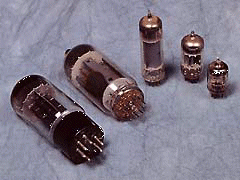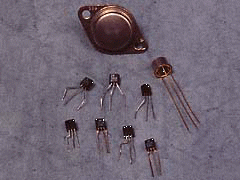History of Computers
Computer education means gaining basic knowledge and skills to operate computers in order to perform desired jobs. Computer Education not only involves basic knowledge about computer, computer education extends to various branches of study in various fields and sectors.
History of Computers
This chapter is a brief summary of the history of Computers. It is supplemented by the two PBS documentaries video tapes "Inventing the Future" And "The Paperback Computer". The chapter highlights some of the advances to look for in the documentaries.
In particular, when viewing the movies you should look for two things:
- The progression in hardware representation of a bit of data:
- Vacuum Tubes (1950s) - one bit on the size of a thumb;
- Transistors (1950s and 1960s) - one bit on the size of a fingernail;
- Integrated Circuits (1960s and 70s) - thousands of bits on the size of a hand
- Silicon computer chips (1970s and on) - millions of bits on the size of a finger nail.
- The progression of the ease of use of computers:
- Almost impossible to use except by very patient geniuses (1950s);
- Programmable by highly trained people only (1960s and 1970s);
- Useable by just about anyone (1980s and on).
First Computers
 |
The executable instructions composing a program were embodied in the separate units of ENIAC, which were plugged together to form a route through the machine for the flow of computations. These connections had to be redone for each different problem, together with presetting function tables and switches. This "wire-your-own" instruction technique was inconvenient, and only with some license could ENIAC be considered programmable; it was, however, efficient in handling the particular programs for which it had been designed. ENIAC is generally acknowledged to be the first successful high-speed electronic digital computer (EDC) and was productively used from 1946 to 1955. A controversy developed in 1971, however, over the patentability of ENIAC's basic digital concepts, the claim being made that another U.S. physicist, John V. Atanasoff, had already used the same ideas in a simpler vacuum-tube device he built in the 1930s while at Iowa State College. In 1973, the court found in favor of the company using Atanasoff claim and Atanasoff received the acclaim he rightly deserved.
Progression of Hardware
In the 1950's two devices would be invented that would improve the computer field and set in motion the beginning of the computer revolution. The first of these two devices was the transistor. Invented in 1947 by William Shockley, John Bardeen, and Walter Brattain of Bell Labs, the transistor was fated to oust the days of vacuum tubes in computers, radios, and other electronics.
 |
 |
In 1958, this problem too was solved by Jack St. Clair Kilby of Texas Instruments. He manufactured the first integrated circuit or chip. A chip is really a collection of tiny transistors which are connected together when the transistor is manufactured. Thus, the need for soldering together large numbers of transistors was practically nullified; now only connections were needed to other electronic components. In addition to saving space, the speed of the machine was now increased since there was a diminished distance that the electrons had to follow.
 |  |
| Circuit Board | Silicon Chip |
Mainframes to PCs
The 1960s saw large mainframe computers become much more common in large industries and with the US military and space program. IBM became the unquestioned market leader in selling these large, expensive, error-prone, and very hard to use machines.
A veritable explosion of personal computers occurred in the early 1970s, starting with Steve Jobs and Steve Wozniak exhibiting the first Apple II at the First West Coast Computer Faire in San Francisco. The Apple II boasted built-in BASIC programming language, color graphics, and a 4100 character memory for only $1298. Programs and data could be stored on an everyday audio-cassette recorder. Before the end of the fair, Wozniak and Jobs had secured 300 orders for the Apple II and from there Apple just took off.
Also introduced in 1977 was the TRS-80. This was a home computer manufactured by Tandy Radio Shack. In its second incarnation, the TRS-80 Model II, came complete with a 64,000 character memory and a disk drive to store programs and data on. At this time, only Apple and TRS had machines with disk drives. With the introduction of the disk drive, personal computer applications took off as a floppy disk was a most convenient publishing medium for distribution of software.
IBM, which up to this time had been producing mainframes and minicomputers for medium to large-sized businesses, decided that it had to get into the act and started working on the Acorn, which would later be called the IBM PC. The PC was the first computer designed for the home market which would feature modular design so that pieces could easily be added to the architecture. Most of the components, surprisingly, came from outside of IBM, since building it with IBM parts would have cost too much for the home computer market. When it was introduced, the PC came with a 16,000 character memory, keyboard from an IBM electric typewriter, and a connection for tape cassette player for $1265.
By 1984, Apple and IBM had come out with new models. Apple released the first generation Macintosh, which was the first computer to come with a graphical user interface(GUI) and a mouse. The GUI made the machine much more attractive to home computer users because it was easy to use. Sales of the Macintosh soared like nothing ever seen before. IBM was hot on Apple's tail and released the 286-AT, which with applications like Lotus 1-2-3, a spreadsheet, and Microsoft Word, quickly became the favourite of business concerns.
That brings us up to about ten years ago. Now people have their own personal graphics workstations and powerful home computers. The average computer a person might have in their home is more powerful by several orders of magnitude than a machine like ENIAC. The computer revolution has been the fastest growing technology in man's history.


Comments
Post a Comment
akhileshpawar5@gmail.com